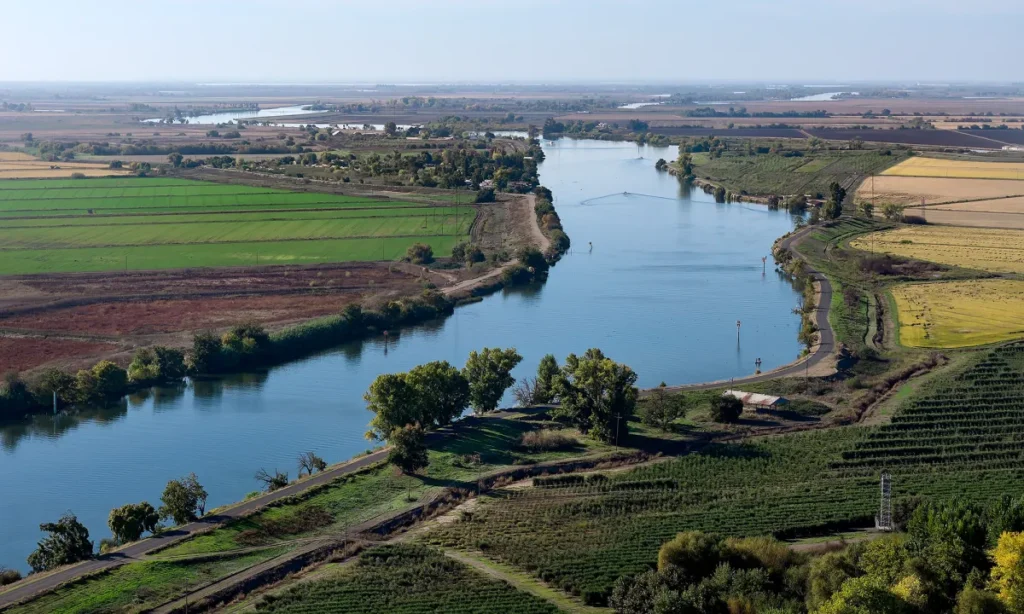Tule River Tribe secures funding to reclaim ancestral lands, preserving crucial watershed and wildlife habitat. (Wildlife Conservation Board)

- Grant helps Tule River Tribe acquire 14,000-acre Hershey Ranch, preserving Deer Creek headwaters and diverse habitat.
- Project reconnects ancestral lands, expands wildlife corridors, and supports reintroduction of beaver and Tule elk.
- Acquisition advances California's 30x30 conservation initiative and addresses historical Native American land dispossession.
Share
A former cattle ranch in the southern Sierra Nevada foothills with proximity to the headwaters of Deer Creek is one step closer to being conserved thanks to a $2.4 million grant and collaborative efforts between the Tule River Indian Tribe, California Natural Resources Agency, The Conservation Fund and the Wildlife Conservation Board.

Lisa McEwen
SJV Water
The Hershey Ranch, in southeastern Tulare County, is a stunning swath of more than 14,000 acres of blue oak woodlands that conservationists deemed a “must conserve” property years ago because of its varied qualities, key among them its Deer Creek watershed and the riparian habitat of rolling hills and savannahs.
Deer Creek is one of the few remaining undammed waterways in the state, said Logan Robertson Huecker, executive director of Sequoia Riverlands Trust, a nonprofit based in Visalia that submitted a letter in support of the project.
“The Tule River Tribe’s recent approval for funding to acquire the Hershey Ranch is a huge deal for our region,” she said. “It’s not on the Valley floor, but arguably the restoration and management work they will do there can impact and improve potential future flooding.”
Related Story: Kings County Supervisors Opt To Keep Current Chair In Light Of Water Troubles
Preserving a Critical Watershed
During widespread flooding in early 2023, Deer Creek busted its banks in several areas in the flatlands of southern Tulare County, most notably where it intersects with the Friant-Kern Canal. At the time, an unfinished stretch of the canal suffered a severe breach when the normally dry creek swelled with rain and snowmelt, overran its banks and inundated the construction zone.
“For many years, SRT has believed that this is a must-conserve property, so we’re very pleased that the Tribe has been successful in getting funding for the acquisition,” Robertson Huecker said.
The Conservation Fund project manager Ben Fryer has worked closely with the Tule River tribe on this project. While the grant funding is for acquisition only, it’s the first step toward restoration of the creek in its upper elevations. He said the tribe will next conduct studies to determine what type of restoration efforts are needed.
The Conservation Fund, which acts as a bridge organization in such purchases, intends to convey the property to the Tribe early in 2025, once the funds awarded by WCB and the Natural Resources Agency are available.
Enhancing Wildlife and Cultural Preservation
Robertson Huecker said the project will enhance the plans of the Tule River tribe to reintroduce beaver and Tule elk to the foothills of the southern Sierra Nevada. Additionally, this project will increase access to outdoor recreational space for both Tribal members and disadvantaged communities in the Tule basin.
She said the trust threw its weight behind the project because it addresses the state’s historical dispossession of Native Americans.
The property contains former homelands of both the Yokuts and Tubatulabal people, ancestors of the Tule River tribe. Its preservation will link to adjacent properties that have conservation easements, reconnecting ancient tribal lands and expanding wildlife corridors between the mountains and the Valley floor. One of those lands is Fay Ranch, which the Wildlife Conservation Board helped Tubatulabal members acquire in 2024.
The Hershey Ranch also represents a potential summer range for the Yowlumni wolfpack, a pair of breeding adults and six pups found in Sequoia National Forest in proximity to the tribe’s reservation in 2023. The name comes from the Yowlumni band of Tule River Yokuts.
Related Story: Gov. Newsom’s Office Slams Trump’s Water and Wildfire Claims as ...
Advancing Conservation Goals
Combined, these qualities helped the Tule River tribe earn the grant from the Wildlife Conservation Board during its quarterly meeting on Nov. 21. The tribe must still secure remaining grant funding from the California Natural Resources Agency to complete the transaction, which should close escrow by mid-2025, according to a WCB spokesperson.
Charmaine McDarment, chairwoman of the Tule River Tribal Council, said in a press release that the tribe appreciates help in restoring ancestral homelands.
“As the climate crisis brings new pressures to address the effects of environmental mismanagement and resource degradation, the Tribe’s partnership with WCB is an important example of building relationships based in collaboration and trust.
“The Tribe remains committed to supporting co-stewardship efforts and fighting to ensure that disproportionate harms to Native American lands, culture, and resources are resolved in a manner that centers and honors Native American connections to ancestral lands.”
Tule River Tribal member Ian Cummins said public access to ancestral lands offers space for important practices. “Outdoor recreation and spiritual and cultural uses are important to tribal members.”
Robert Gomez, Tubatulabal Tribal Chairman, said he is familiar with the Hershey Ranch and its proximity to the 1,200-acre Fay Ranch.
“As the crow flies, what separates us is the north fork of the Kern River,” he said. “We are absolutely, without a doubt, one of the most disenfranchised communities in California and the nation. Given the opportunity, I always encourage our council and other councils to take advantage of any land that could be returned to us.”
Proposition 4, which was approved by voters in November, will provide another $1 billion to the organization for similar land conservation and habitat restoration work throughout the state in the future.
These grants help to advance Gov. Gavin Newsom’s goal of conserving 30 percent of California’s lands and coastal waters by 2030, an initiative known as 30×30.
The Wildlife Conservation Board awarded more than $52.3 million in grants to 24 projects, which can be viewed here.
About the Author
SJV Water Reporter Lisa McEwen grew up in Tulare County. She has reported on agriculture and other issues for a wide variety of publications, including, Ag Alert, Visalia Times-Delta, the Fresno Bee and the Tulare and Kings counties farm bureau publications.
About SJV Water
SJV Water is an independent, nonprofit news site covering water in the San Joaquin Valley, www.sjvwater.org. Email us at sjvwater@sjvwater.org.
RELATED TOPICS:
Categories

Trump Signs Order Aimed at Curbing State AI Laws


















